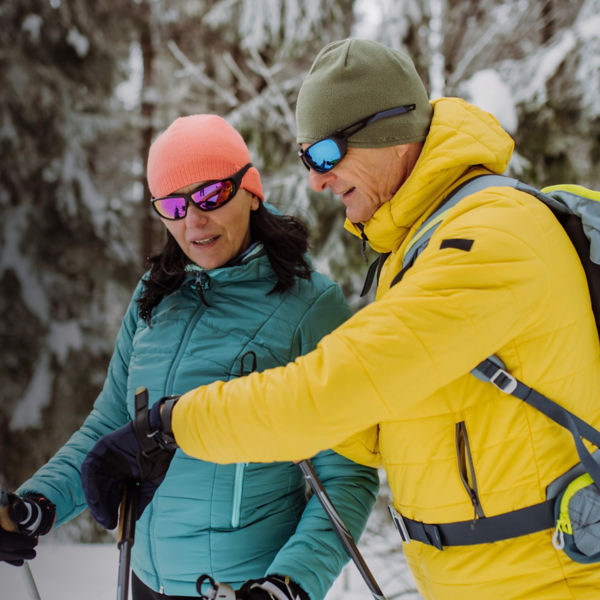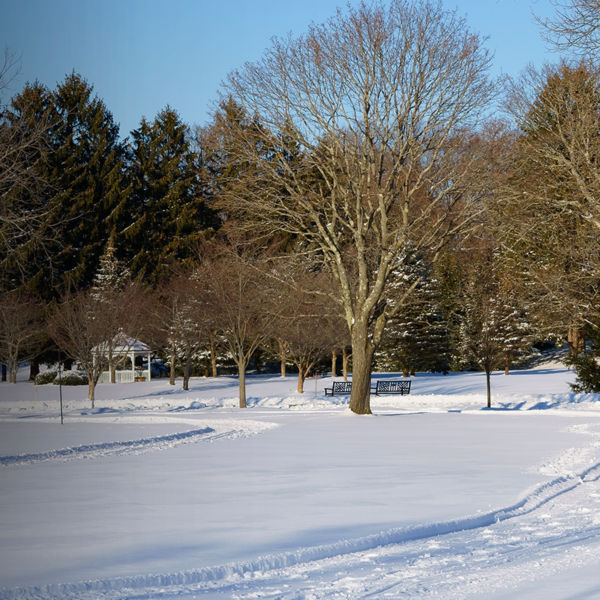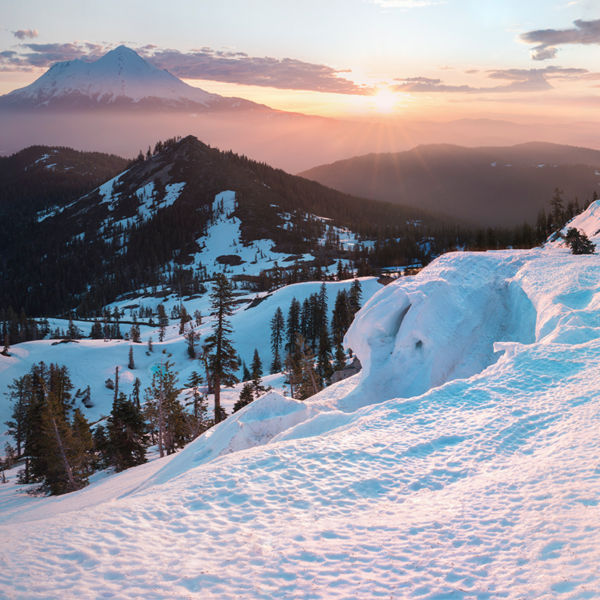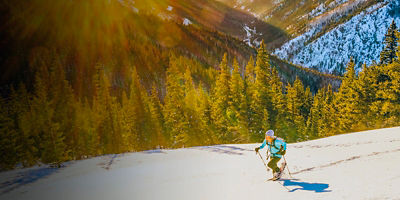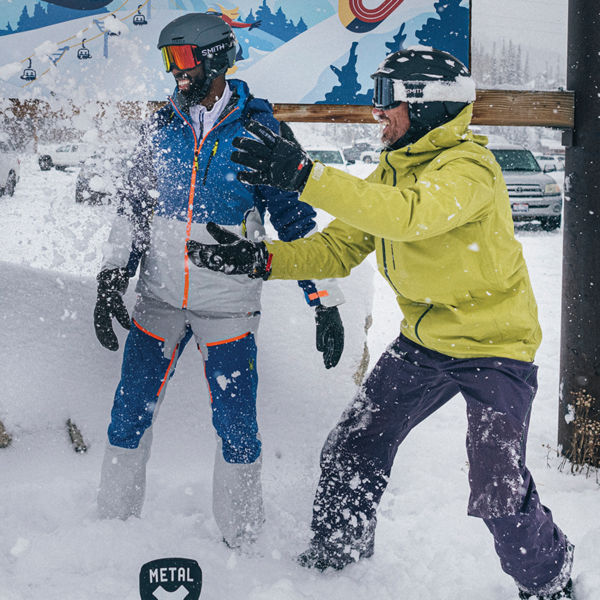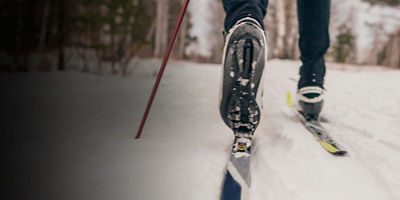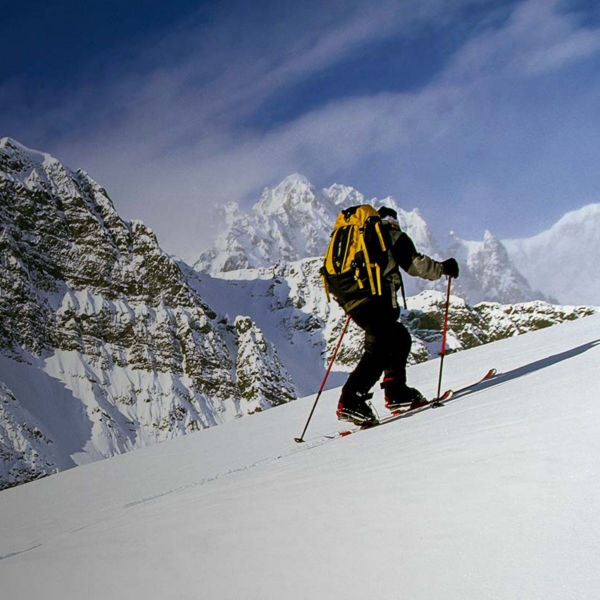
Knowing how to handle cold weather is a learned skill, and one that any good teacher can appreciate. Take Aidan Goldie, a ski mountaineer and science teacher born amid Chile’s tropical rainforests, who had to work hard to pursue a lifelong dream of climbing and skiing on snow-covered peaks. When he was 12 years old, he finally got his chance when his family immigrated to Colorado. But Goldie quickly discovered that good ski technique wasn’t the only new trick he needed to learn.
“If you’re cold and wet all the time, it can really affect your initial enjoyment of the sport,” explains Goldie, remembering a particular arrival at the top of a ski day’s first run, only to have sweated through his gloves entirely. “Suddenly my hands are freezing,” he recalls, “and by the time I get to the bottom, I don’t feel like I can get them warm.” Being unprepared can prematurely end a ski day just as surely as poor fitness, says Goldie, pointing out why he’s spent his career dialing in his cold-weather systems to stay out as long as possible.
Here are Goldie’s hard-earned tricks for staying warm in any winter weather—applicable to any active outdoor venture at hand.
1) Slow your roll.
When it comes to winter adventure, staying warm means staying dry. If you get damp—either due to sweat or melting snow—it can be difficult to warm back up, Goldie says. That can put you at risk of hypothermia. So, keep an eye on your pace. If you start to sweat, you’re going too fast with too many clothes on. Stop ASAP to drop a layer. And if you’ve already stripped down to a T-shirt? Slow down.
2) Dial in your wicking strategy.
Layering and pacing aren’t the only components of smart sweat management. “You really need to have a base layer that works for you,” Goldie says. Choose a shirt that lays close to the skin, where it can wick sweat, dump heat, and help you regulate your temperature. Many skiers opt for thin merino-wool base layers—usually long sleeves on the top and full-length long underwear on the bottom. Merino wool not only wicks sweat but retains warmth when wet and naturally fights odor. However, Goldie finds that when he’s really working hard, a summer-weight, synthetic fabric can be even more effective. “I’m a big fan of using a sun hoody,” he says. “They’re very lightweight and make a good wicking base layer.”
3) Dress in layers.
Dressing for winter weather is all about layers. The idea is to have lots of thin articles of clothing so that you can add or subtract them to optimize your insulation level. On top of his base layer, Goldie usually wears a breathable mid-layer—usually a lightweight jacket with synthetic insulation. In his pack, he carries a big puffer jacket that he throws on during water breaks, snack breaks, and transitions from uphill to downhill.
4) Snowproof yourself.
Remember what we said about staying dry? That’s as much about keeping the snow off as it is about staying under the sweat threshold. If it’s actively snowing, Goldie will wear both a hard-shell jacket and hard-shell pants. He generally looks for options that have full-length zippers, which let you vent heat—or zip it in—as needed.
5) Bring at least three pairs of gloves.
When it’s cold, your body shunts heat from your extremities to your core, leaving your hands vulnerable. Goldie’s strategy for keeping his digits warm: always having dry gloves. “Once gloves get wet, it’s pretty hard to dry them while you’re out,” he says. “So I always bring three to four pairs with me. I’ll use a light pair of liner gloves with leather palms when I’m ski touring. If things get cold or windy, I’ll throw on a pair of shell gloves over the liners to deflect any snow or moisture.” Since he usually sweats through the liners on the uphill, he’ll switch to thicker gloves for the actual skiing. “I usually keep a couple of pairs in my backpack,” he says, “just in case one gets wet.”











